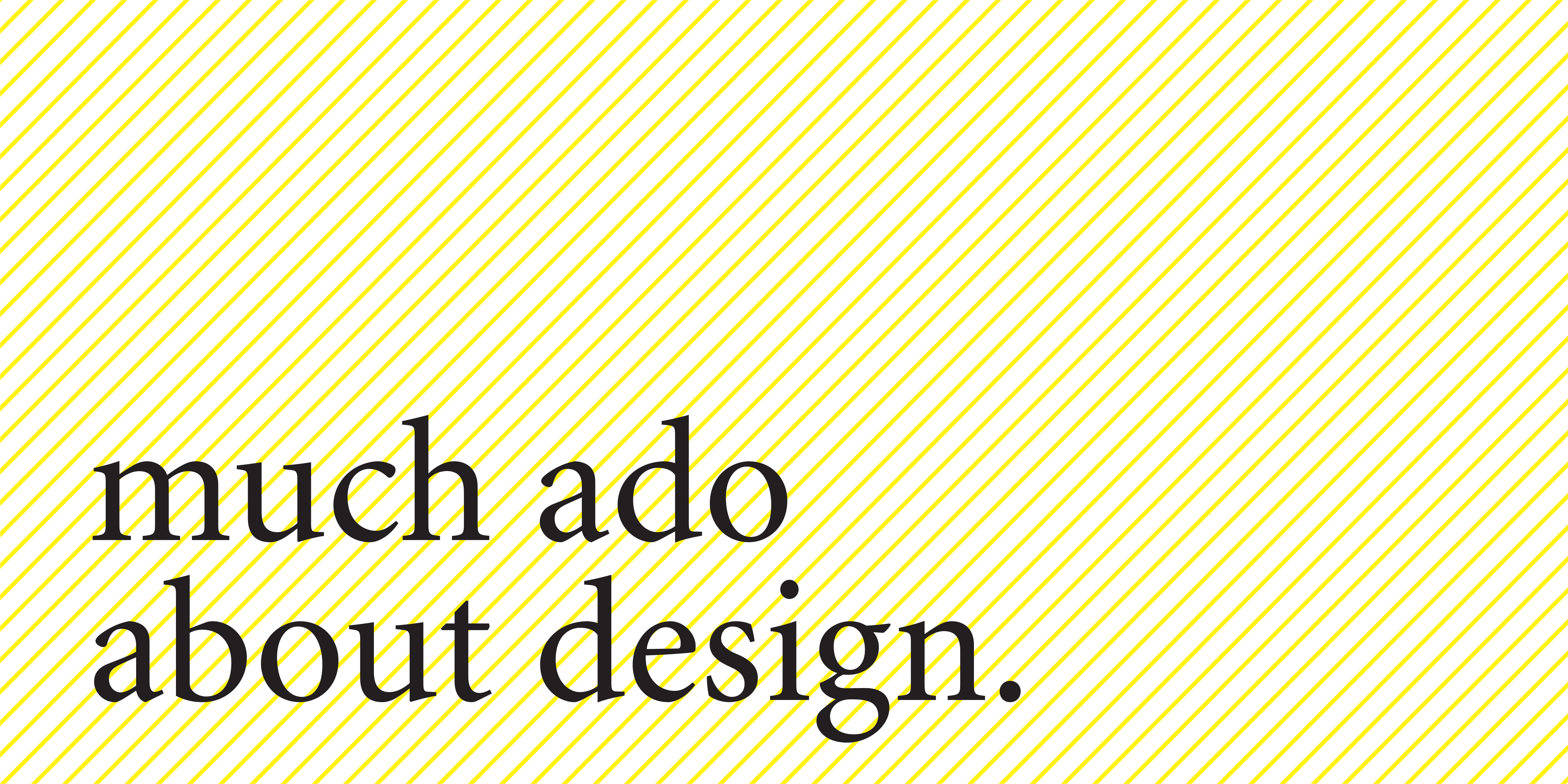Much Ado About Design
Diane Borries
January 15, 2016

When I tell someone I’m a graphic designer, more often than not, the response is “So, you make logos?” A positive reply to that query would be accurate, but it’s only part of the story. The field of graphic design is quite multi-faceted and encompasses much more than the creation of logos. While there is a familiarity amongst the general public with the term “graphic design,” it does give the implication that it is solely the creation of a picture, graphic, or logo. Because of this, there has been a push within the design community itself to move toward the use of “communication design,” which better defines the work that I, and many other print designers, do.
So, what is communication design, anyway?
In the simplest of terms, communication design is the visual conveyance of an idea or message. Every day, we are surrounded by the handiwork of designers, from billboards on the sides of city buses, and menus in restaurants, to food packaging, corporate identity, store catalogs, pamphlets in your doctor’s office, and annual reports. You get the idea! Just as diverse as the final products are, so too are areas of design specialty. Stroll through Target and you’ll see brand design at its finest; editorial designers created the latest issue of Food & Wine that left you drooling; and your favorite snacks come housed in the creation of a package designer.
What makes for good design?
It is the job of a designer to grab a viewer’s attention by effectively and efficiently telling a story or expressing an idea in a creative way. Any designer worth their salt will listen to their client’s needs and utilize good design standards, while imparting a bit of their own style and aesthetic when appropriate. Designers, by their nature, have a strong attention to detail and it’s this trait that can often differentiate one design from the next. Take typography, for example. Not only is the selection of a typeface (or typefaces) for a project a big task, but the act of typesetting also requires a high level of care. Lines of text should not run too close together or too far apart, and spacing between the letters themselves should be neither too tight nor too loose. Other considerations in layout and design include color, use of negative space, and the inclusion of illustrations or photography. Many elements need to come together in a smart and deliberate way to create a piece that tells the client’s story. I have always enjoyed the following quote by Herbert Bayer and I feel it really summarizes the efforts of designers:
“The creative process is not performed by the skilled hand alone, but must be a unified process in which ‘head, heart, and hand play a simultaneous role.’”
Although core tenets of design can be taught, I do believe that designers and artists alike share an innate visual “eye,” and a passion that comes from the heart. That’s not to say there can’t be a time and place for “bending the rules” so to speak. Done properly, deviation from some of these design values can be effective to achieve a certain feeling. For instance, running lines of type close together or right at the edge of a page can create visual friction and evoke a sense of chaos or disorder. Positioning type or a photo at an angle, or using bright red type on a bright yellow background can create a dynamic feeling. Designers are equipped with many tools (physical and electronic) to create myriad possibilities, so long as they are done with a purpose.
How can a professional creative firm help me?
The benefits of utilizing a creative firm can be invaluable to a company both in ideation and creation. In addition to possessing technical skills, designers are problem solvers who can offer an objective perspective to companies and organizations. Hiring a professional will also ensure a consistent use of your brand, if one already exists. Lastly, a good creative firm, like Fuzzy Duck, wants nothing more than to see success for their clients by helping them stand out in a crowd.
For more information on Fuzzy Duck and its services, please contact us at 952-449-6800.